MENU
The Electronic Scholarly Publishing Project: Providing access to classic scientific papers and other scholarly materials, since 1993. More About: ESP | OUR CONTENT | THIS WEBSITE | WHAT'S NEW | WHAT'S HOT
Comparative Timelines
The ESP Timeline (one of the site's most popular features) has been completely updated to allow the user to select (using the timeline controls above each column) different topics for the left and right sides of the display.
Select:
New Left Column
New Left Column
Dates
Decade
New Right Column
New Right Column
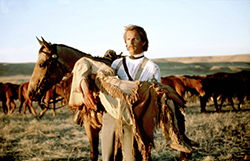 Dances With Wolves wins Academy Award for best picture. No major studio wanted to make the film, but the Kevin Costner-directed Western proved a huge hit with audiences and earned 12 Oscar nominations, winning seven.
Dances With Wolves wins Academy Award for best picture. No major studio wanted to make the film, but the Kevin Costner-directed Western proved a huge hit with audiences and earned 12 Oscar nominations, winning seven.
1990
The Human Genome Project is launched with the goal of sequencing all 3 billion base pairs of human DNA by 2005.
Mongolia invites the American Museum of Natural History to reinstate excavations in the Gobi desert.
Scott Wing of the Smithsonian Institution discovers the Big Cedar Ridge fossil plant site in Wyoming. The locality will become known as the Pompeii of Cretaceous plants.
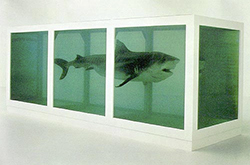 Scultpure by Damien Hirst: The Physical Impossibility of Death in the Mind of Someone Living consists of a large (14 foot) tiger shark preserved in formaldehyde in a vitrine. It is considered the iconic work of British art in the 1990s, and has become a symbol of Britart worldwide. The work was funded by Charles Saatchi, who in 1991 had offered to pay for whatever artwork Hirst wanted to create. Saatchi sold the work in 2004 to Steven A. Cohen for an estimated $8 million. When the original shark showed signs of deterioration (it rotted from the inside out and a fin fell off), it was replaced with a new specimen in 2006, thereby raising a Ship of Theseus problem: Does a work of art remain the same work if its components are replaced with new components?
Scultpure by Damien Hirst: The Physical Impossibility of Death in the Mind of Someone Living consists of a large (14 foot) tiger shark preserved in formaldehyde in a vitrine. It is considered the iconic work of British art in the 1990s, and has become a symbol of Britart worldwide. The work was funded by Charles Saatchi, who in 1991 had offered to pay for whatever artwork Hirst wanted to create. Saatchi sold the work in 2004 to Steven A. Cohen for an estimated $8 million. When the original shark showed signs of deterioration (it rotted from the inside out and a fin fell off), it was replaced with a new specimen in 2006, thereby raising a Ship of Theseus problem: Does a work of art remain the same work if its components are replaced with new components?
 The Silence of the Lambs wins Academy Award for best picture. It became the third and final film to win Oscar's top five prizes (film, director, script, actor, and actress). It was a surprise win because suspense thrillers were not considered Academy favorites, and Silence had opened in February; but the film maintained its enthusiastic buzz for more than a year.
The Silence of the Lambs wins Academy Award for best picture. It became the third and final film to win Oscar's top five prizes (film, director, script, actor, and actress). It was a surprise win because suspense thrillers were not considered Academy favorites, and Silence had opened in February; but the film maintained its enthusiastic buzz for more than a year.
1991
Chicxulub crater is discovered in the Yucatán Peninsula, supporting the asteroid impact theory first suggested in 1980.
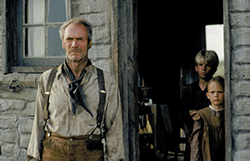 Unforgiven wins Academy Award for best picture. Clint Eastwood had directed 15 films in the past 20 years, earning industry respect and affection, but few awards. However, the thoughtful, well-crafted Unforgiven proved irresistible to audiences and to Academy voters. Since it was the second western to win in three years, some predicted a major big-screen revival of the genre, but that didn t happen.
Unforgiven wins Academy Award for best picture. Clint Eastwood had directed 15 films in the past 20 years, earning industry respect and affection, but few awards. However, the thoughtful, well-crafted Unforgiven proved irresistible to audiences and to Academy voters. Since it was the second western to win in three years, some predicted a major big-screen revival of the genre, but that didn t happen.
1992
A team led by Tim White finds the first traces of a hominid fossil that will later be named Ardipithecus ramidus. Seventeen years later, the team will publish a detailed description of a 4.4-million-year-old, 120-centimeter-tall, nearly complete adult female, along with fossils from 35 other individuals. The team will argue that "Ardi" should supplant Lucy at the base of the hominid tree.
Ian Campbell and collaborators publish a paper pointing to the Siberian Traps, an area of massive volcanic activity, as the cause of the Permo- Triassic mass extinction 251 million years ago.
Paleontologists led by Jim Kirkland discover Utahraptor, a super-sized velociraptor that conveniently supports the super-sized velociraptors that will appear in the screen version of Jurassic Park a year later.
Suburban San Diego roadwork uncovers mastodon bones and broken rocks at what becomes known as the (Richard) Cerutti Mastodon site. Roadwork halts while paleontologist Tom Deméré examines the find. Twenty-five years later, Deméré, Cerutti and nine other researchers will contend that the site is evidence of human presence in North America 130,000 years ago.
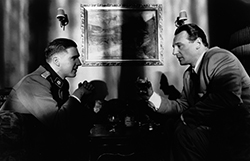 Schindler's List wins Academy Award for best picture. The Steven Spielberg film defied conventional wisdom, by being a long, black and white movie about a depressing topic. But it was a hugely popular win.
Schindler's List wins Academy Award for best picture. The Steven Spielberg film defied conventional wisdom, by being a long, black and white movie about a depressing topic. But it was a hugely popular win.
1993
A calcite-encrusted hominid skeleton is discovered in a karst cave near Altamura, Italy. About two decades later, researchers will date the rock layers and test a scapula fragment, eventually concluding that the skeleton is probably 128,000 to 187,000 years old, and ranks among so- called "early Neanderthals."
Geology student Iwan Stossel stumbles across a nearly 400-million-year-old tetrapod fossil trackway on the island of Valentia, County Kerry, Ireland.
J. William Schopf publishes a description of microfossils of the Apex Basalt in Australia. His claims that they are 3.5-billion-year-old microbes that could photosynthesize and produce oxygen will later be challenged. One of his challengers, Martin Brasier, will coauthor a 2011 study on microfossils from a nearby outcrop, claiming that the 3.4-billion- year-old microbes fed off sulfur.
On an expedition in the Gobi desert, paleontologists from the American Museum of Natural History discover the skeleton of an Oviraptor dinosaur crouching over a nest of eggs, apparently incubating them in the same fashion as modern birds.
Roland Anderson and Jennifer Mather publish "Personalities of Octopuses" in the Journal of Comparative Psychology.
 Forrest Gump wins Academy Award for best picture. The Robert Zemeckis-directed film, starring Tom Hanks, utilized many technical innovations, but Oscar voters responded more to the tale and to the title character than to the decade-spanning effects.
Forrest Gump wins Academy Award for best picture. The Robert Zemeckis-directed film, starring Tom Hanks, utilized many technical innovations, but Oscar voters responded more to the tale and to the title character than to the decade-spanning effects.
1994
Anthropologist Ron Clarke finds previously overlooked foot bones, showing both ape and human qualities, from Sterkfontein. Future finds will associate these bones with a skeleton nicknamed Little Foot.
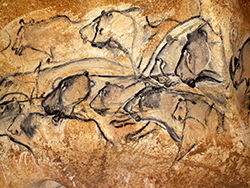 In what will later be named Chauvet Cave, French cavers discover 32,000-year-old paintings showing 400 animal images.
In what will later be named Chauvet Cave, French cavers discover 32,000-year-old paintings showing 400 animal images.
 Braveheart wins Academy Award for best picture. The biopic, directed by Mel Gibson, was a popular winner in a tight year. It's also one of the few films to win Oscar's top prize without a single acting nomination, alongside Last Emperor, Slumdog Millionaire, and a few others.
Braveheart wins Academy Award for best picture. The biopic, directed by Mel Gibson, was a popular winner in a tight year. It's also one of the few films to win Oscar's top prize without a single acting nomination, alongside Last Emperor, Slumdog Millionaire, and a few others.
1995
Lee Berger and Ron Clarke publish an article in the Journal of Human Evolution arguing that the Taung child, discovered in 1924, may have been killed by a bird of prey.
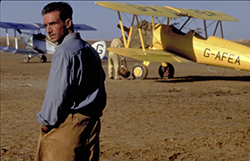 The English Patient wins Academy Award for best picture. The film almost wasn t made, when the studio withdrew funding at the last minute. But Harvey Weinstein stepped in, and the film (directed by Anthony Minghella) earned an impressive $232 million worldwide, and scored nine Oscars meaning it's one of the top seven winners of all time.
The English Patient wins Academy Award for best picture. The film almost wasn t made, when the studio withdrew funding at the last minute. But Harvey Weinstein stepped in, and the film (directed by Anthony Minghella) earned an impressive $232 million worldwide, and scored nine Oscars meaning it's one of the top seven winners of all time.
1996
Using "molecular clock" estimates of mutation rates, Greg Wray and collaborators hypothesize that metazoan phyla diverged from each other 1 billion years ago, or even earlier. In other words, they argue that metazoans existed hundreds of millions of years before the earliest metazoan fossils (about 600 million years old) yet found.
Alan Walker and Pat Shipman publish a description of advanced Vitamin A poisoning in a 1.7-million-year-old Homo erectus skeleton. They assert that it is evidence of both meat eating, caused by consuming the liver of a large carnivore, and sufficient sociability in Homo erectus to care for an ill and incapacitated individual.
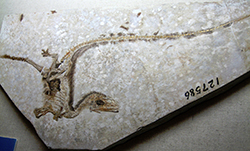 Chen Pei Ji unveils Sinosauropteryx prima from Liaoning, China, the first feathered dinosaur discovered, at the Society of Vertebrate Paleontology's annual meeting. Fourteen years later, a team of Chinese and British paleontologists will argue that this animal had a striped tail, a reddish color alternating with white, based on pigment-rich microscopic spheres in the fossilized feathers.
Chen Pei Ji unveils Sinosauropteryx prima from Liaoning, China, the first feathered dinosaur discovered, at the Society of Vertebrate Paleontology's annual meeting. Fourteen years later, a team of Chinese and British paleontologists will argue that this animal had a striped tail, a reddish color alternating with white, based on pigment-rich microscopic spheres in the fossilized feathers.
The roughly 9,000-year-old Kennewick Man skeleton is found in the northwestern United States. Craniometric analysis initially suggests an affiliation to Ainu and Polynesian groups. Better DNA sampling methods will finally allow genetic analysis nearly 20 years later, and that will indicate a relationship closest to modern Native Americans.
Tim White's team discovers horse, antelope and other mammal bones with cut marks from stone tools — evidence of tool use 2.5 million years ago.
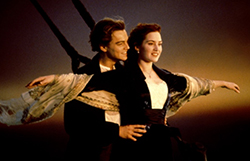 Titanic wins Academy Award for best picture.
Titanic wins Academy Award for best picture.
1997
A team of archaeologists finds evidence of human occupation 14,000 years ago at Monte Verde, Chile, pushing back the arrival date of humans in the Americas.
Excavations near Koblenz in northern Germany turn up a Neanderthal skullcap, estimated at 170,000 years old, that was apparently used as a bowl.
Paleontologist Karen Chin receives a 17-inch coprolite excavated in Saskatchewan. Estimated at 65 million years old and full of crunched bone, it is likely the calling card of a T. rex.
Paleontologist Paul Sereno discovers the delicate Darth Vader-like skull of a dinosaur he will later name Nigersaurus taqueti and nickname the "Mesozoic Cow."
Two 5-foot-long Humboldt squid in the Sea of Cortez "mug" a diver working on a PBS documentary, making off with the gold chain hanging around the diver's neck, and demonstrating that Humboldt squid have bad manners but good taste.
 Shakespeare in Love wins Academy Award for best picture. It was a battle between Steven Spielberg's Saving Private Ryan and Shakespeare in Love, and many were stunned when the comedy won. But it shouldn t have been a surprise: The film is a love letter to theater and acting, and the largest branch of the Academy is actors.
Shakespeare in Love wins Academy Award for best picture. It was a battle between Steven Spielberg's Saving Private Ryan and Shakespeare in Love, and many were stunned when the comedy won. But it shouldn t have been a surprise: The film is a love letter to theater and acting, and the largest branch of the Academy is actors.
1998
Andrew Parker publishes a paper suggesting that some Cambrian animals (Wiwaxia, Canadia and Marella) developed flickering displays of iridescent color at about the same time that eyes evolved.
Aterian artifacts (named for stone tools discovered in Algeria in 1917) are estimated at 70,000 years old at sites in Libya. Over the next dozen years, the age of artifacts found at various sites in northern Africa will be pushed back to at least 110,000 years old.
Xiao, Zhang and Knoll describe fossilized animal embryos in Nature. Li, Chen and Hua simultaneously describe embryos in Science. The fossils all come from the Doushantuo phosphorites in southern China, and all are estimated to be about 570 million years old, making them the oldest fossil embryos so far discovered. Nine years later, however, Bailey and collaborators will challenge this interpretation, arguing the "fossil embryos" could just as easily be large bacteria. That challenge will be answered by the announcement of fossil embryos inside egg cysts.
 American Beauty wins Academy Award for best picture. The dramedy looked at all the dark longings beneath the sunny facade of U.S. suburbia.
American Beauty wins Academy Award for best picture. The dramedy looked at all the dark longings beneath the sunny facade of U.S. suburbia.
1999
Chinese paleontologists discover an exceptionally well-preserved feathered dinosaur, probably a juvenile dromaeosaur. Citing the confusion caused by language barriers and jet lag, the paleontologists' American collaborators nickname the fossil "Dave the fuzzy raptor," after a character alluded to in a Cheech and Chong routine. This fossil will be assigned to the genus Sinornithosaurus. (The next fuzzy discovery will be nicknamed "Chong.")
ESP Quick Facts
ESP Origins
In the early 1990's, Robert Robbins was a faculty member at Johns Hopkins, where he directed the informatics core of GDB — the human gene-mapping database of the international human genome project. To share papers with colleagues around the world, he set up a small paper-sharing section on his personal web page. This small project evolved into The Electronic Scholarly Publishing Project.
ESP Support
In 1995, Robbins became the VP/IT of the Fred Hutchinson Cancer Research Center in Seattle, WA. Soon after arriving in Seattle, Robbins secured funding, through the ELSI component of the US Human Genome Project, to create the original ESP.ORG web site, with the formal goal of providing free, world-wide access to the literature of classical genetics.
ESP Rationale
Although the methods of molecular biology can seem almost magical to the uninitiated, the original techniques of classical genetics are readily appreciated by one and all: cross individuals that differ in some inherited trait, collect all of the progeny, score their attributes, and propose mechanisms to explain the patterns of inheritance observed.
ESP Goal
In reading the early works of classical genetics, one is drawn, almost inexorably, into ever more complex models, until molecular explanations begin to seem both necessary and natural. At that point, the tools for understanding genome research are at hand. Assisting readers reach this point was the original goal of The Electronic Scholarly Publishing Project.
ESP Usage
Usage of the site grew rapidly and has remained high. Faculty began to use the site for their assigned readings. Other on-line publishers, ranging from The New York Times to Nature referenced ESP materials in their own publications. Nobel laureates (e.g., Joshua Lederberg) regularly used the site and even wrote to suggest changes and improvements.
ESP Content
When the site began, no journals were making their early content available in digital format. As a result, ESP was obliged to digitize classic literature before it could be made available. For many important papers — such as Mendel's original paper or the first genetic map — ESP had to produce entirely new typeset versions of the works, if they were to be available in a high-quality format.
ESP Help
Early support from the DOE component of the Human Genome Project was critically important for getting the ESP project on a firm foundation. Since that funding ended (nearly 20 years ago), the project has been operated as a purely volunteer effort. Anyone wishing to assist in these efforts should send an email to Robbins.
ESP Plans
With the development of methods for adding typeset side notes to PDF files, the ESP project now plans to add annotated versions of some classical papers to its holdings. We also plan to add new reference and pedagogical material. We have already started providing regularly updated, comprehensive bibliographies to the ESP.ORG site.
ESP Picks from Around the Web (updated 06 MAR 2017 )
Old Science

Weird Science

Treating Disease with Fecal Transplantation
Fossils of miniature humans (hobbits) discovered in Indonesia

Dinosaur tail, complete with feathers, found preserved in amber.
Astronomy

Mysterious fast radio burst (FRB) detected in the distant universe.